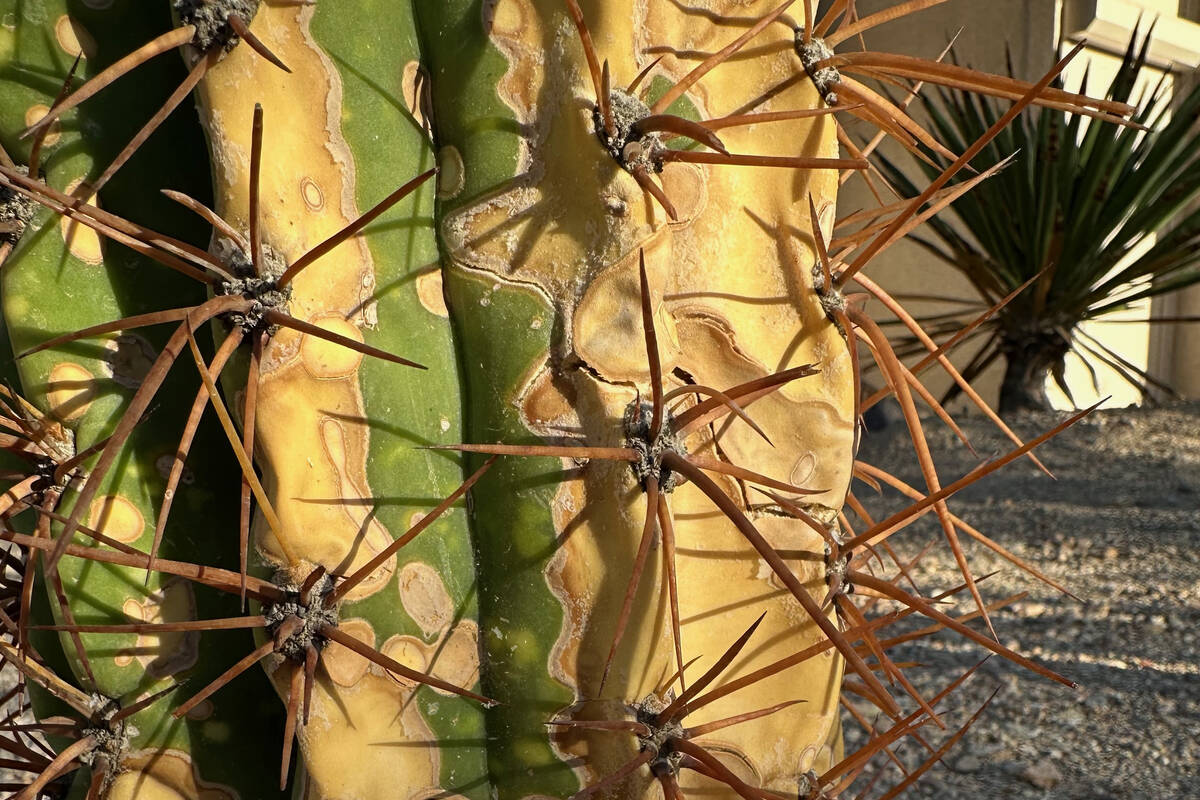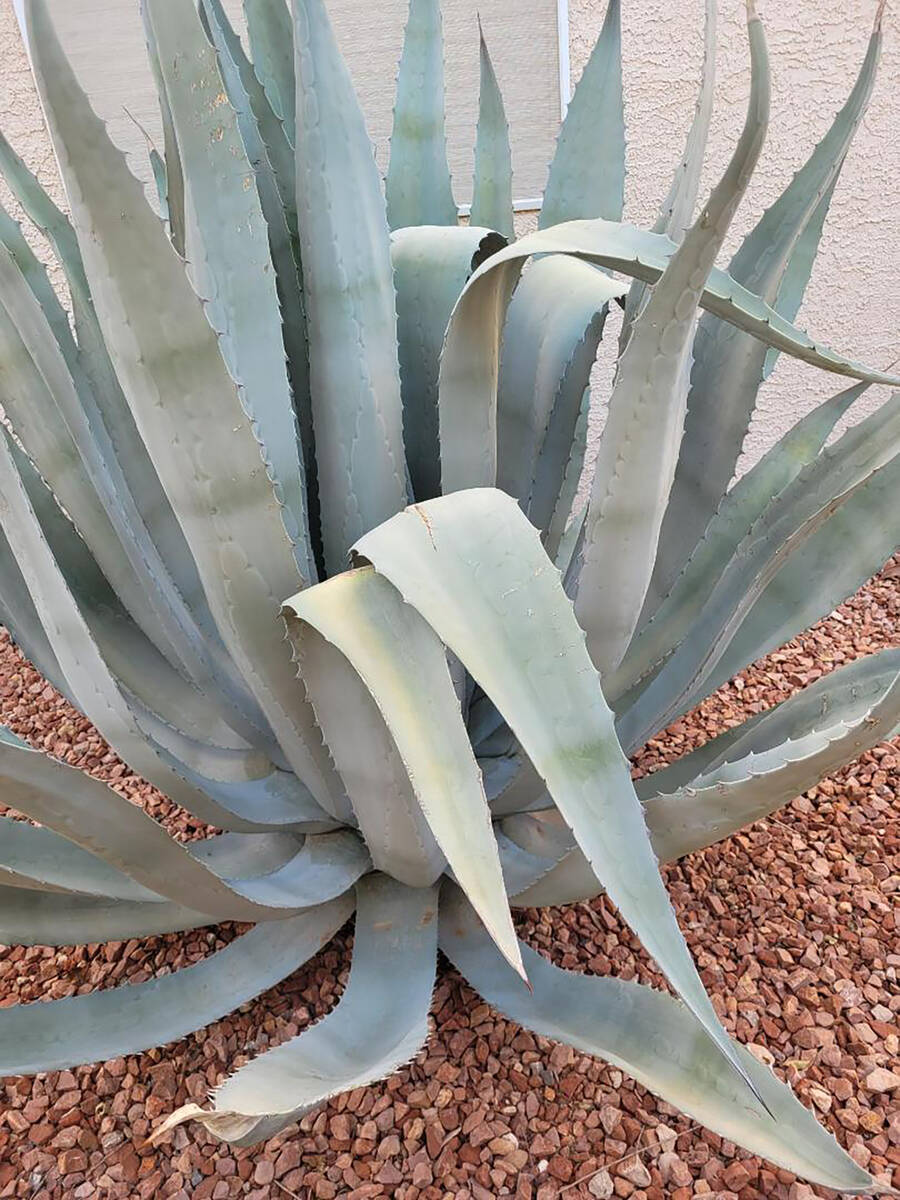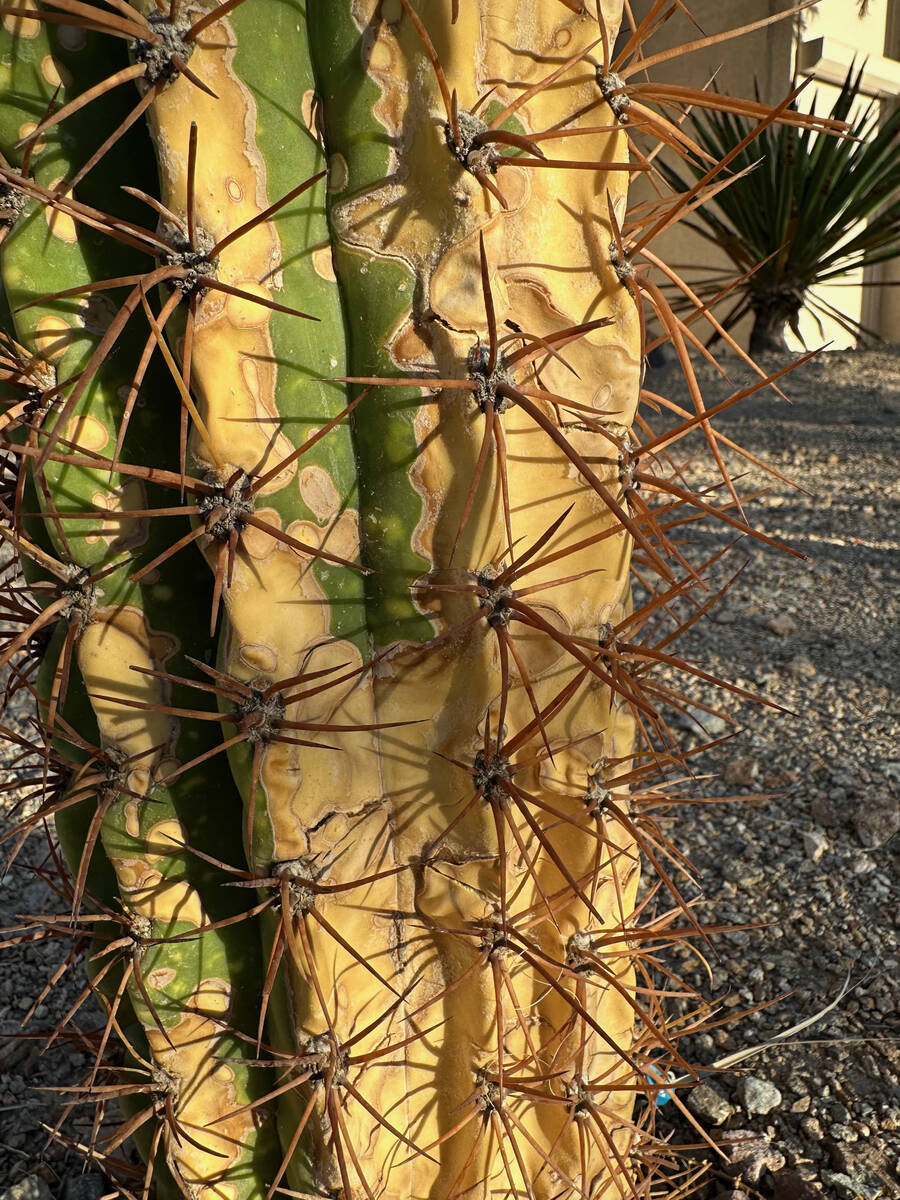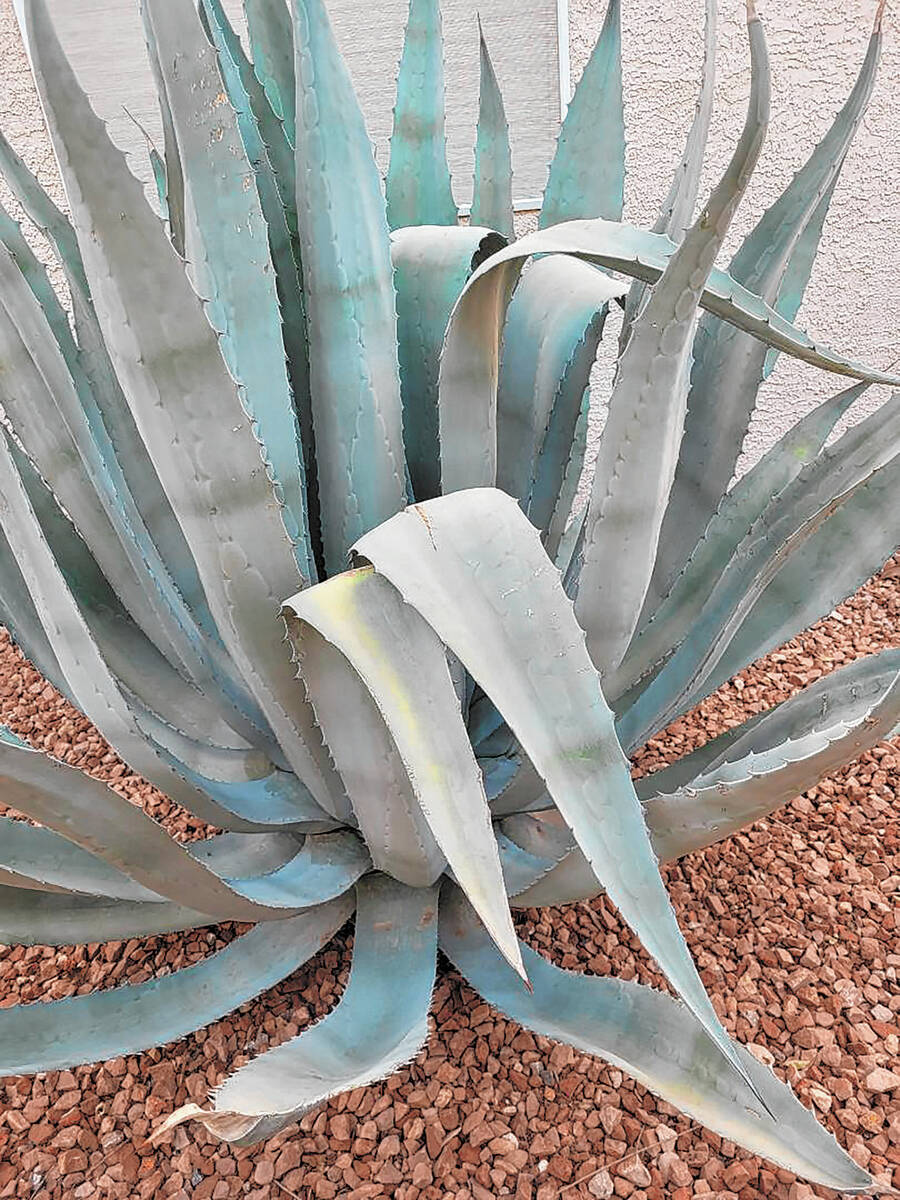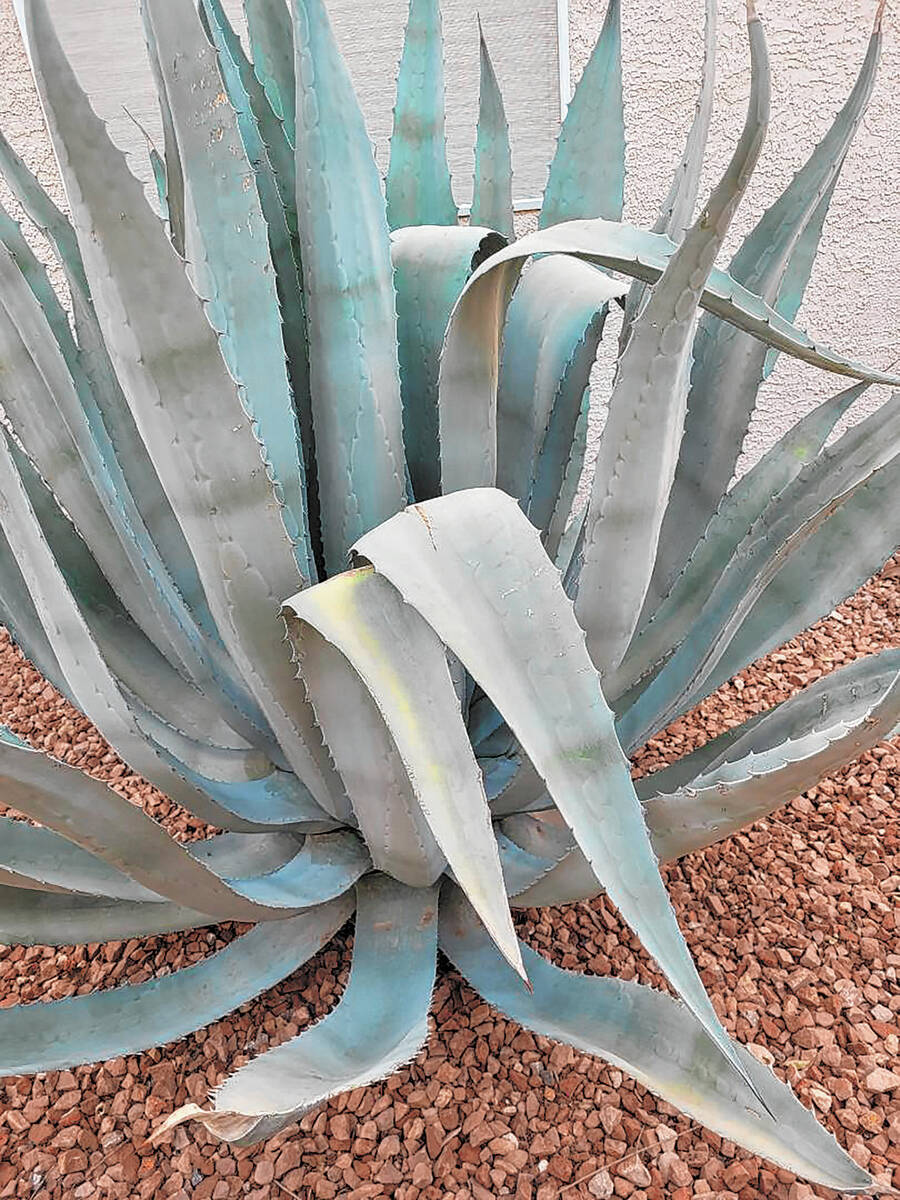What’s to blame for odd blotches on Argentine saguaros?
Q: I am reaching out for help to figure out what is going on with a few of our Argentine saguaros.
We have six of these saguaros planted on the east side. They were planted in March 2021 and have grown well since. One of the saguaros last year started to have yellow blotching on one side, which has since spread. The same blotching has since appeared on multiple other saguaros.
We initially thought it was sun scorch. But patches have also appeared on the sides of the saguaro that get little direct sun. The tissue initially only seems discolored, but over time it starts to almost dry out. We are not sure what could be causing this and what we should do.
A: I think this problem started as a sunburn infection (abiotic disease) and continued as a biotic disease, most likely bacterial necrosis. That’s why it might seem to spread to new places. That will sometimes happen if the plant is weak or in poor health.
In my opinion, this infection should be treated as a biotic disease. I would not wait. Improve plant health and cut out the infection. In my experience, about half of an older plant can be removed and it will still survive if it’s in good health. After the infection has been eliminated, continue to improve plant health.
Here’s link to a fact sheet from the University of Arizona on saguaro diseases and what to do about them: bit.ly/SaguaroDiseases.
Q: My Mexican palm fronds are turning yellow and then to brown daily. I had the flowers cut off about a week ago. I get two or three fronds a day turning brown.
A: The usual reason for palms failing is centered around water — either watering too often or not applying enough water. Removing flowers has nothing to do with it.
Related to this is drainage: It’s important that the water moves from the soil surrounding the roots to a lower place beneath the roots in a sufficient amount of time. Therefore, daily watering should be avoided.
Having water always present in the soil surrounding the roots can cause big problems for palms. Their roots need a long drink of water, and then they should wait for their next drink, possibly two or three days in the summer. This gives the soil a chance to drain and the roots an opportunity to breathe oxygen.
Several plant diseases are encouraged if the soil is kept too wet. If the palms were not receiving enough water the fronds or leaves might be small, and they would be burned or scorched around their edges. Palms that are not receiving enough water will have a very small canopy with small leaves that are burning or scorching.
I believe the roots of your palms are surrounded by water too often and not given a chance to breathe. A small amount of compost helps the water to move from the soil and allows the roots to breathe. I would use a posthole digger and make holes 4 to 5 inches in diameter to a depth of 2½ to 3 feet, about 1 or 2 feet from the stem. Keep them open or fill them with large rocks. Use half-inch to 1-inch diameter rocks or gravel to keep the holes open.
These holes are called French drains and help the water move away from the roots and improve drainage. Hopefully, if it is not too late you will see an improvement in the new growth of the palms in one month or so.
Q: Why are the leaves drooping on my 5-foot-tall agave plant? And what can I do to keep this agave healthy? I don’t want to lose this beauty. The plant is about 5 years old.
A: Based on your picture, I think this is an American agave, which is native to the Southwest, specifically the Chihuahuan Desert. It can get confused with another agave (commonly called “Spanish dagger”) that is native to dry areas of the Southeast.
There are usually two reasons for the top dying: root rot from watering too often or agave weevil, which can infest the roots of desert agaves in mid-spring.
Nearly all desert agaves should be watered only once a month at most (except the agaves native to the Southeast). Most of our desert agaves can be watered less frequently, but when you do water, water the roots to 12 to 18 inches deep.
Agave weevils typically infest a plant about March, causing it to rot and turn to mush later. By this time of the year, the roots would be probably mushy if this was the problem. The adults would have flown off by now.
As insurance against the agave weevil, apply a granular insecticide in March or early April. Any commonly used insecticide that is registered for “agave weevil” or “systemic control of root weevils” is recommended.
Bob Morris is a horticulture expert and professor emeritus of UNLV. Visit his blog at xtremehorticulture.blogspot.com. Send questions to Extremehort@aol.com.



